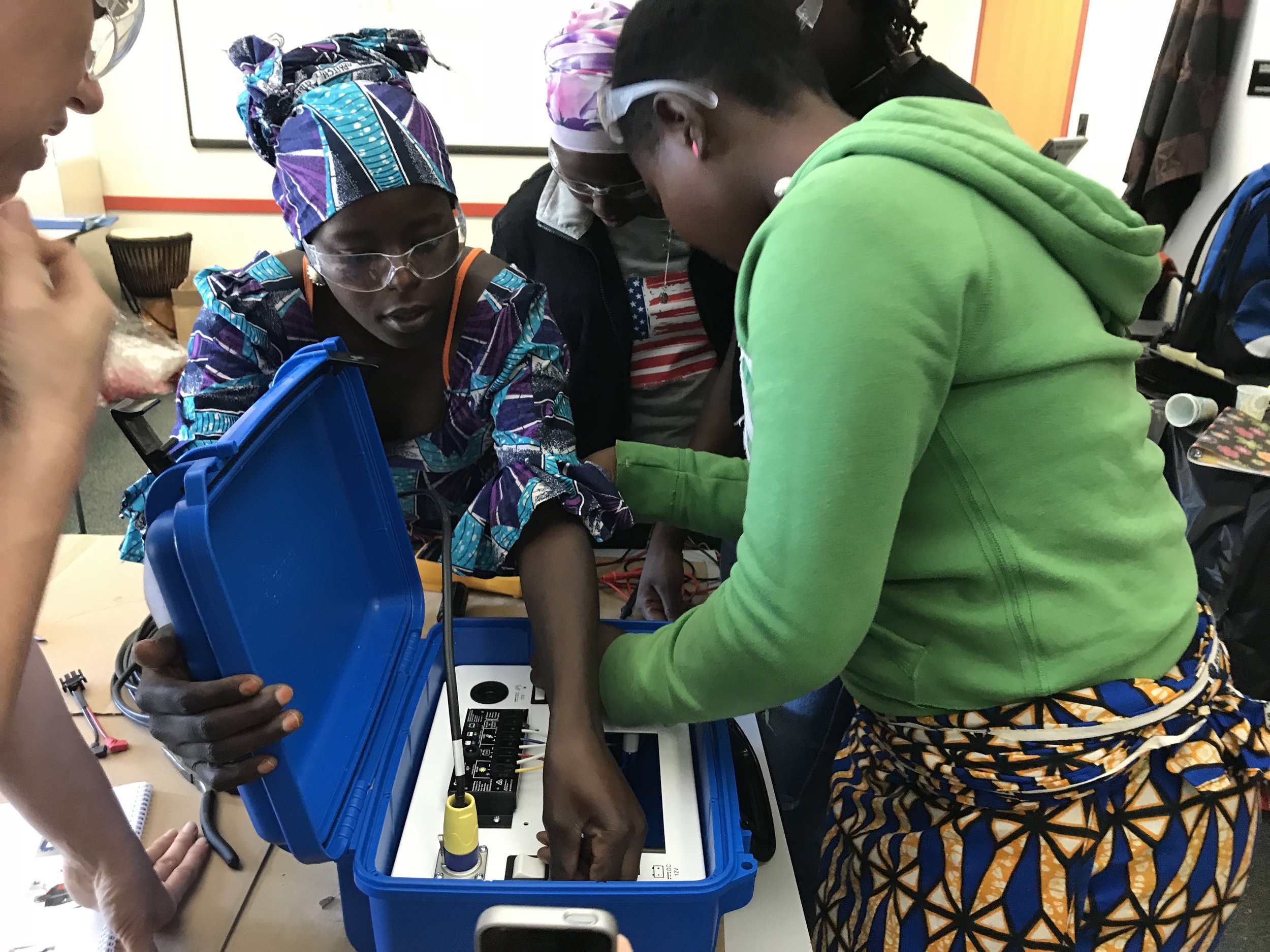Finding Gender Balance in the Renewable Energy Workforce
In the last decade, the renewable energy (RE) sector has seen enormous growth with solar electric photovoltaic (PV) leading the way. There is limited data available that accurately disaggregates men and women working in the renewable energy industry. However, momentum is building to better understand the sector through a gender lens.
In 2019, the International Renewable Energy Agency (IRENA), surveyed 1,500 individuals and companies working globally in the renewable energy sector. It was the most comprehensive look at gender in the RE workforce to date. While on average, the percentage of women working in RE (32%) is much higher than those working in oil and gas (22%), women comprise only 28% of the technical STEM (science, technology engineering, and mathematics) jobs. (IRENA RE: A Gender Perspective 2019)
Clearly, women are underrepresented.
In the PV industry, our own experience anecdotally confirms this underrepresentation—especially in niche technical positions. This trend can be seen on jobsites, at solar conferences and events, in national sector meetings, and when looking at the student gender profiles at solar technical training centers.
All-female PV classes, coupled with targeted marketing, have great potential to increase the number of female participants that receive technical training and leads to more qualified women in the PV workforce. Carol Weis, co-founder of Remote Energy, has demonstrated through her work how such approaches can double the number of female participants in training programs. This proved to be the case in the two technical solar training programs described below which offered both co-ed and all-female classes with Carol Weis as the lead technical trainer.
The first program was conducted by Solar Energy International (SEI), a non-profit training organization based on Colorado, USA. SEI started offering solar design and installation classes in 1991. Laurie Stone, former International Program Manager at SEI, immediately recognized a gender discrepancy in SEI’s early programs as the majority of participants were male. “We knew that there were women out there who wanted to get in the field, and that they just needed a safe, comfortable environment to get involved,” Laurie explained. In 1998 SEI began offering its first all-female courses. Using feedback from the initial cohort, SEI revised the course design, offering all women instructors in the proceeding courses. In addition, targeted marketing efforts highlighted that the courses were taught “by women, for women.”
The all-female courses were an absolute success. In the three years before and after the introduction of the all-female classes, the mixed-gender courses continued to attract roughly 20% female participants. However, the all-female classes attracted an additional 73 women into SEI’s courses, more than doubling the number of women going through the program! It is unknown if the women would have joined mixed-gender classes without the all-female class offering. However, the data suggests that it did offer another avenue for more women to get technical solar training.
VOCTEC Women’s training in India
The second case study comes from an international training program. USAID partnered with Arizona State University to create the Vocational Training and Education for Clean Energy (VOCTEC) program to train regional solar technicians and trainers on off-grid solar electric systems. Data was reviewed from nine of their train-the-trainer workshops and three technician workshops which took place in Nepal, Figi, Kenya, Palau, India, and Tonga from 2013 – 2016. (VOCTEC LWA Final report, 2016)
The gender ratios from VOCTEC’s co-ed classes were similar to SEI’s—predominately male dominated. Of the 12 workshops examined, seven were mixed gender, four were women’s only, and one was mixed-gender with a major marketing effort to recruit women. The VOCTEC dataset shows that only 11% of the participants in the mixed-gender programs were women. After adding the women’s only and women’s targeted courses, the program jumped up to 52% women participants!
Jacinta Gatwiri participated as a student in one of VOCTEC’s all-female PV trainings in Kenya. She has continued her studies and now teaches and installs PV and coordinates a program to train fellow women in Kenya. Jacinta shared the difference she has experienced between the all-female solar class as compared with other co-ed courses taken. In the co-ed classes, “men want to take lead in doing everything especially when it comes to hands-on activities.” Jacinta explained that due to this, women tend to shy away from participating and end up as observers. She went on to explain that, “in an all-women class there is that confidence to try as you see fellow women doing it and get motivated. Women also seem to be more accommodating and will work together until they succeed.”
As a female instructor, Carol also recognized the women’s need for “room to participate” and saw how confidence builds when women work together. “Women interact differently in a women-only class,” Carol explains. “For example, they ask more questions and get more involved in the hands-on portions of the class than in a mixed-gender training.” Many women have also stated that they feel less intimidated to use new tools and learn a technical subject with other women. Jacinta from Kenya finally felt that she could “try without fear of being judged.”
Carol and the Remote Energy team have been teaching both all-female and mixed-gender courses for solar designers and technicians for 20 years. We have found that many women prefer to attend technical classes when the classes are taught and attended only by women. The presence and guidance of female instructors creates a more comfortable overall environment for female trainees, enabling greater participation in the class. A female instructor is also a role model for students—showing them that it is possible to succeed in this technical field.
VOCTEC Women's Training of Trainers, Kenya
Appropriately marketing training courses is also important. Regional solar train-the-trainer classes may also lack women participants if the marketing outreach is only to technical colleges where the number of female electrical instructors may be low. Women in these trainings from technical schools have stated that they typically are the only woman in their department, but their presence has encouraged female students to study under them. Moving forward, marketing needs to broaden outreach to gain women participants from other related sectors including the utility sector, solar energy associations, other departments such as environmental science, and women engineering and STEM groups. Technical colleges should consider hiring women into their solar electrical programs to make easier pathways for female students.
Offering women’s only classes is a valuable way to get more women into the solar industry. It is a way to address a major barrier that women face because they haven’t grown up using tools or being encouraged to pursue STEM careers. All-female classes are one way to bring balance to the gender disparity in the solar industry!
Join us for a women’s-only solar class today!
Contributions: Thanks to Kevin Johnstone, Energy Access Specialist for the International Institute for Environment and Development (IIED) for his encouragement and edits to this piece!



